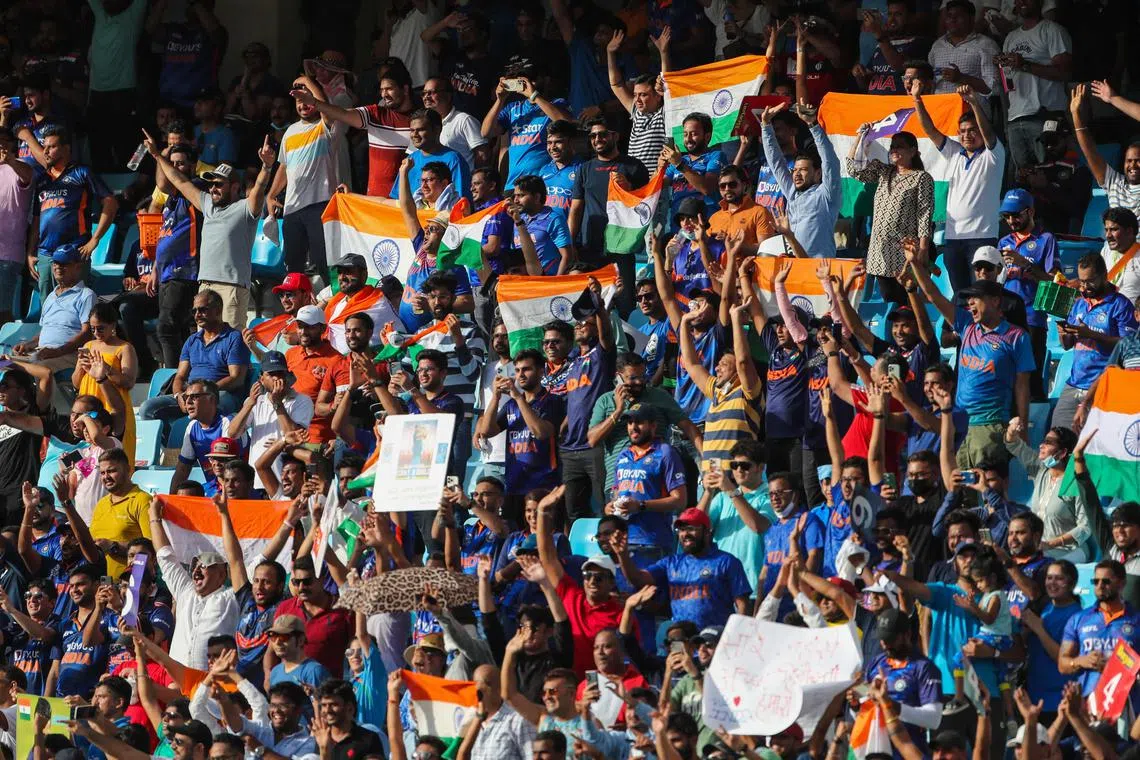India-based Twitter accounts fanned British unrest, researchers say
Sign up now: Get ST's newsletters delivered to your inbox

Researchers also found evidence of bot-like accounts which disseminated both anti-Hindu and anti-Muslim messaging.
PHOTO: REUTERS
Follow topic:
LONDON – A network of fake accounts originating outside of Britain stoked violence between Muslims and Hindus
An estimated 500 inauthentic accounts that called for violence and promoted memes as well as incendiary videos were created on Twitter during riots in Leicester between late August and early September this year, according to the Network Contagion Research Institute (NCRI) at Rutgers University.
Hundreds of people took to the streets in the days following a cricket match between long-held rivals India and Pakistan on Aug 27.
Some rioters carried sticks and batons and threw glass bottles as police were deployed to calm the masses. Homes, cars and religious artefacts were vandalised during the clashes, which went on for weeks and resulted in 47 arrests, according to Leicestershire police.
Social media was rife with videos claiming to show mosques being set alight and claims of kidnapping, forcing police to issue warnings that people should not believe misinformation online. Many of the Twitter accounts that amplified the unrest originated in India, researchers said.
Anti-Muslim sentiment has been rising in Hindu-majority India under Prime Minister Narendra Modi, leading to a narrative that Hindus outside the country, some of whom who are not Indian, subscribe to Hindutva, a kind of Hindu nationalism.
An initial video purporting to show Hindutva Hindus attacking Muslim men
US technology firms played a key role in fanning the confrontations, said Leicester Mayor Peter Soulsby.
“Our research finds that both domestic networks of assailants and foreign actors now compete to use social media as a weapon in the midst of heightened ethnic tensions,” said Mr Joel Finkelstein, founder of NCRI. “Our methods highlight a process and technology that democracies need to learn to take preventative measures and protect themselves and their communities.”
Using data collected from YouTube, Instagram, Twitter and TikTok, the NCRI report provides one of the most detailed views of how foreign influencers spread disinformation at a local level, transpiring into clashes in one of the most diverse cities in Britain.
Mentions of “Hindu” exceeded mentions of “Muslim” by nearly 40 per cent, and Hindus were largely depicted as aggressors and conspirators in a global project for international dominance, NCRI’s linguistic analysis found. They found that 70 per cent of violent tweets, using sentiment analysis from Google’s Jigsaw service, were made against Hindus during the Leicester riot timeframe.
Researchers also found evidence of bot-like accounts which disseminated both anti-Hindu and anti-Muslim messaging, each blaming the other for the violence. The bots were identified based on the time of account creation and the number of repeated tweets, with some tweeting 500 times per minute, said the report.
Largely, the researchers found that UK-based assailants used social media platforms as a weapon to organise attacks and amplify conspiracies against British Hindus, which, in turn, caused a “tit-for-tat relationship between these two forces”, said Mr Finkelstein.
After the first instances of fake videos spread on Twitter, a “highly orchestrated echo chamber”, from India kicked into amplify tweets “solely blaming Muslims for the events in Leicester”, which in turned spurred even more violence against Hindus in Leicester, the report said.
This suggested that local community tensions were ripe for exploitation on Twitter by external nationalist groups, the researchers warned.

Spectators wait for the start of a match between India and Pakistan in the Dubai International Cricket Stadium at Asia Cup 2022, on Aug 28, 2022.
PHOTO: AFP
The BBC and disinformation research company Logically also found evidence that a lot of the social media posts during the unrest hailed from India, some 8,000km away.
Mr Fiyaz Mughal, an author of the report and the founder of Tell MAMA, a service that allows people in Britain to report anti-Muslim abuse and monitors Islamophobic incidents, said he was shocked at how quickly social networks “could jump on these issues”.
Twitter did not respond to a request for comment.
MP for Leicester East Claudia Webbe said the riots were undoubtedly sparked by social media. Although hundreds of police were deployed to areas around the West Midlands to monitor the demonstrations, she said she believed most of her constituents within the Hindu and Muslim community had largely been affected “through their phones”.
“You’ve got these overseas influences who are trying to drive political hate and the desire to sow division,” she said. BLOOMBERG

